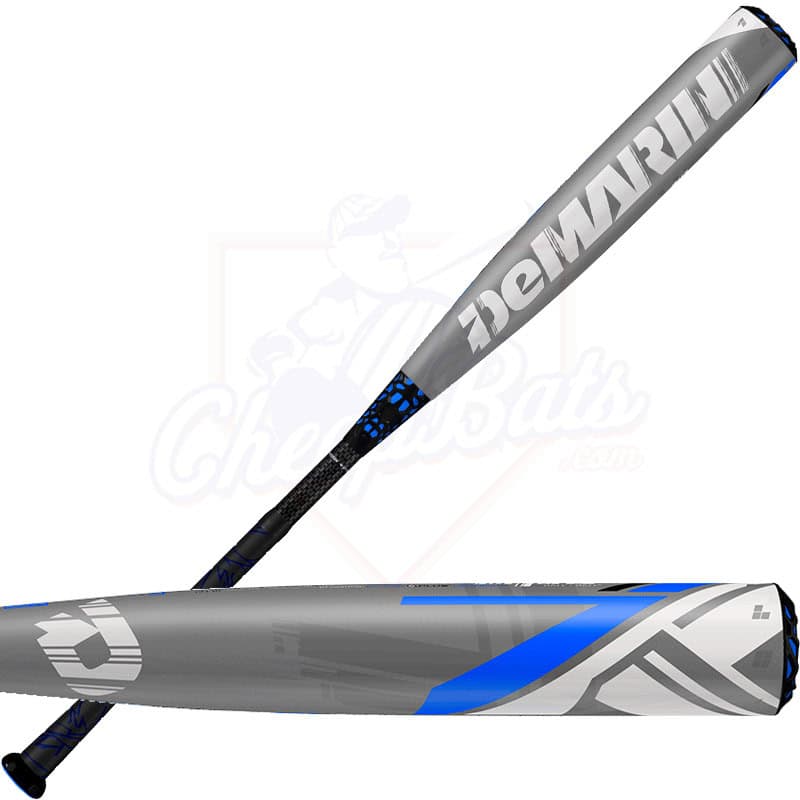 With so many different baseball bats, and so many different leagues with their various rules and regulations, figuring out exactly which bat is legal for play can be a daunting task. One standard that is practically universal for the younger ballplayer is the USSSA 1.15 Bat Performance Factor (BPF) standard. While this may seem foreign and out of your league, the following history and information should have you feeling more at home in no time.
With so many different baseball bats, and so many different leagues with their various rules and regulations, figuring out exactly which bat is legal for play can be a daunting task. One standard that is practically universal for the younger ballplayer is the USSSA 1.15 Bat Performance Factor (BPF) standard. While this may seem foreign and out of your league, the following history and information should have you feeling more at home in no time.
For starters, USSSA stands for the United States Specialty Sports Association. They are a non-profit, sports governing body, with a primary focus on all-inclusive competition among teams of various skill levels. For them, it’s all about the development of players, an appreciation for the game, and last but definitely not least, safety! That is why they have implemented the 1.15 BPF standard over the years.
 What the 1.15 BPF represents is essentially the maximum trampoline-like effect of the bat’s barrel. It wasn’t long ago when there were no set standards for bats that were not made of wood. As you could imagine, these bats were performing at a very high level, resulting in unrealistic productivity from the players and a high level of injuries sustained during the games. Something had to change in order to make the playing field level and safer.
What the 1.15 BPF represents is essentially the maximum trampoline-like effect of the bat’s barrel. It wasn’t long ago when there were no set standards for bats that were not made of wood. As you could imagine, these bats were performing at a very high level, resulting in unrealistic productivity from the players and a high level of injuries sustained during the games. Something had to change in order to make the playing field level and safer.
The BPF of 1.15 was found to be roughly the equivalent of a solid wood bat. This performance level was agreed upon as a safe limit that manufacturers should adhere to when making their bats. To test for a BPF of 1.15, a method based on the simple law of physics, created by retired NYU professor Dr. Richard A. Brandt, is used. The test makes a calculation for the trampoline (or spring-like) effect of the bat by measuring ball speed directed towards a bat and the speed of the kickback in its barrel.
Although there has been a decrease in injuries, some still do not fully believe in the validity nor accuracy of the USSSA 1.15 BPF Standard. Opponents argue that the test does not account for swing speeds of metal bats, known to be much more powerful than wood bats. They also believe that the bat standard does not measure the ball speed coming off the bat after the point of contact.
While the debate may be ongoing, the 1.15 BPF standard is currently here to stay. On Cheapbats, you will find all youth baseball bats and youth big barrel baseball bats have the USSSA 1.15 BPF stamp of approval.
If you have any questions regarding the BPF standard, or would like information on one of the many bats that have the current approval, contact one of our specialists today!


So why not just use wood bats instead of aluminum?
I think it’s mostly because Aluminum and Composite bats are more durable than Wood bats, so they are in turn more reliable and can last for seasons. I’m sure there is a core of people out there that wish all leagues used Wood bats, but I doubt that will happen anytime soon.
I have a big barrel Easton stealth sc888 and I was wondering if I can still use it because it doesn’t say 1.15 bpf it only says approved for official baseball
In today’s game you need the USSSA 1.15 BPF stamp or the BBCOR .50 BPF stamp to play in pretty much any baseball league. The BBCOR .50 BPF stamp approves bats for High School & College, while the USSSA 1.15 BPF stamp approves the bats for all youth baseball leagues, travel ball leagues and USSSA baseball leagues.
I have a bat with 1.15 bpf, however it says recommended for 8 years old and below. Why does it say this?
Curtis, ALL baseball bats currently (other than BBCOR and Wood Bats) are going to have the USSSA 1.15 BPF stamp. So whether your kid is using a 2 1/4″ tee ball or little league, 2 5/8″ pony, or 2 3/4″ travel ball or junior big barrel, they will all have that approval stamp. All of them have the same exit speed allowed off the barrel in performance testing. That USSSA 1.15 BPF stamp shows that it was tested and is approved for youth baseball play.
Are there any wood bats with the 1.15 stamped on them
No, the only bats with stamps are going to be BBCOR, which legalizes those particular wood bats for High School and College play. There are bats with similar barrel to little league, as they’re typically titled as “youth wood bat”, but it wouldn’t have an approval stamp that would legalize for little league, pony, or any USSSA sanctioned travel ball.
Do wooden bats have to have the 1.15 bpf stamp in order to play with it in little league junior division
Youth wood bats do not have the USSSA 1.15 BPF stamp, so they are not legal for Little League, Pony, etc.
i have a mizuno envy bat that is usssa 1.20 bpf ………. is that still legal????????
It should be legal in USSSA leagues, but I would check with your softball league coordinator and review the banned softball bat list.
I’m in 7 th grade and my bat say USSSA 1.15 bpf but apparently I need a bb core bat so is that bat bb core?
Pablo, No. BBCOR Baseball Bats will ONLY have the BBCOR stamp on them, which legalizes them for high school and college play. All BBCOR Bats have a -3oz length to weight ratio and a 2 5/8″ barrel diameter.
Could i use a bat with a usssa stamp on it in high school
Xevier, If you’re talking about baseball – NO. ALL Baseball Bats used in High School must have the BBCOR Certified Stamp, which means it is legalized for high school and college play. All BBCOR Bats have a -3oz length to weight ratio and a 2 5/8″ barrel diameter. If you’re talking about fastpitch softball – YES. Each fastpitch softball bat will have the USSSA 1.20 BPF stamp on it, which shows it’s performance tested and is approved for fastpitch softball play with the proper barrel performance that is allowed by rule.
Can I use a bbcor stamped bat in junior league 13-14 year olds (little league)
You will have to ask your league coordinator or the coach of the team. If BBCOR is allowed just look for bats with the BBCOR certified stamp on them, and they will have a -3oz length to weight ratio and a 2 5/8″ barrel diameter.
If all approved bats have the 1.15 bbf stamp are there any real difference with the “pop” a bat would have? Why buy a three piece composite bat over a one piece alloy if all rated the same?
That is a great question. To put it simply it’s not all about the “pop” on a bat. Yes, there is a performance ceiling for how fast a ball is allowed to come off the bat (and for good reason), however, factors such as sweet spot, durability, swing weight, vibration reduction, hot out of the wrapper vs. break in period, and the overall feel of the bat are all reasons an individual may want to spend more money for a three piece composite bat.
My son was given an older Easton LK32 bat that is labeled 1.15 BPF on the barrel of the bat but does not have the USSSA stamp on it.
Is this still a legal bat to use in mustang level baseball?